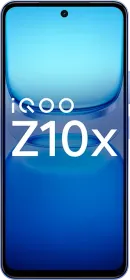TL; DR
- GPT-5 could arrive in August 2025, perhaps by the second or third week of the month. Along with GPT-5, the company could also launch mini and nano versions of the AI model.
- First and foremost, GPT-5 is anticipated to integrate various OpenAI models (including o3 and 4o) into a unified, streamlined model that can do everything.
- Several reports suggest that GPT-5 is designed for multi-step reasoning, which is beyond the simple question-answer model that the current AI models follow.
- While the GPT-4 Turbo currently supports a context window of 128,000 tokens. However, GPT-5 could increase this to around seven to eight times (with some rumors mentioning the AI model’s context window to be around a million tokens).
OpenAI is about to unveil its most advanced and powerful AI model: GPT-5. Given that the model marks a significant step toward artificial general intelligence (AGI), enthusiasts, analysts, and users around the world are excited about the improvements it might offer. Although OpenAI hasn’t confirmed anything, there are plenty of reports on the internet giving us a brief idea of what we can expect from the upcoming AI model.
Also Read: iPhone Sales Up 13% YoY as Apple Hits 3 Billion Units, iOS 26 Beta Breaks Records
When Will GPT-5 Arrive?
According to a report by The Verge, GPT-5 could arrive in August 2025, perhaps by the second or third week of the month. Along with GPT-5, the company could also launch mini and nano versions of the AI model.
Alongside ChatGPT, GPT-5 could also arrive on Microsoft Copilot, as the latter has reportedly been testing the AI model as part of a new “Smart Mode,” which could segregate between queries based on their complexity and automatically hand them over to the required AI model within GPT-5.
What Do We Expect From GPT-5?
GPT-5 To Feature A Unified Architecture
First and foremost, GPT-5 is anticipated to integrate various OpenAI models (including o3 and 4o) into a unified, streamlined model that can do everything.
In other words, the upcoming AI model should be able to understand text, image, voice, and potentially video (i.e., it will be multimodal in nature), eliminating the need to switch between different versions that specialize in one or more of these (users could still interact with different models, such as nano, mini, or GPT-5, in different environments).
Enhanced Reasoning Power
As mentioned above, GPT-5 will absorb the advanced reasoning abilities of the current models and dramatically improve upon them. With a focus on reducing errors (including factual inaccuracies, hallucinations, wrong citations, etc.), GPT-5 should produce more reliable responses.
Several reports suggest that GPT-5 is designed for multi-step reasoning, which is beyond the simple question-answer model that the current AI models follow. Sam Altman, the CEO of OpenAI, recently stated that GPT-5 was able to answer a question that he couldn’t himself, and that made him feel “useless.”
Also Read: Amazon Freedom Festival 2025: Top TV, Laptop & Appliance Bargains Under One Roof
Expanded Context Window
While the GPT-4 Turbo currently supports a context window of 128,000 tokens. However, GPT-5 could increase this to around seven to eight times (with some rumors mentioning the AI model’s context window to be around a million tokens).
In my understanding, OpenAI might allow regular (non-paying) users to use a 256,000 token context window, which is still a significant upgrade over the current standards.
Paying customers, such as ChatGPT Plus or enterprise-tier subscribers, might get access to leverage the entire potential of the tool (up to a million tokens), allowing them to provide the chatbot with as much context as possible, resulting in more accurate and relevant results.
An improved context window will also let the chatbot retain information from longer conversations, understand the complexities of lengthy texts (such as elaborate research papers), perform analysis on larger pieces of code, and so on.
Autonomous Agent Capabilities
OpenAI’s GPT-5 might also possess enhanced agentic behaviour, which will unlock the ability to manage tasks, delegate jobs between other APIs, and execute workflows in an ordered and timely fashion. With all the upgrades, the AI model should provide more accurate, informative, and personalized responses, perhaps with proactive solutions to users’ problems.
Also Read: OnePlus Nord 5 vs. realme 15 Pro: Camera Comparison
Sam Altman Is Both Overwhelmed And Scared by OpenAI’s Progress
Call it a self-realization or a marketing campaign, Sam Altman has been comparing the upcoming AI Model — GPT-5 — with the Manhattan Project.
- “Maybe it’s great, maybe it’s bad… but what have we done?”
- “There are no adults in the room,” implying how the development in the realm of artificial intelligence is racing ahead of oversight and regulation.
- “I felt useless relative to the AI, in this thing that I felt like I should have been able to do, and I couldn’t, as it was really hard, but the AI just did it like that.”
- “Maybe the most iconic example is thinking about the scientists working on the Manhattan Project in 1945, sitting there and watching the Trinity test,” wherein the scientists realized that they couldn’t control what they developed, and the true scale of an atomic explosion.
All the quotes are paraphrased from their respective sources.
You can follow Smartprix on Twitter, Facebook, Instagram, and Google News. Visit smartprix.com for the latest tech and auto news, reviews, and guides.


































